There’s no easy way to say this: We are on a timeline. Consumerism, population, deforestation, greenhouse emissions, and more are all adversely affecting the world we live in. The 2022 Nationally Determined Contributions Synthesis Report, released by the United Nations Framework Convention on Climate Change, concluded that while globally a marginal impact has been made in reducing emissions, we are still 21.4 GtCO2e (gigatons of CO2 emissions) away from our goal of 31GtCO2e by 2030. While that in itself seems disheartening, what is encouraging is that eco-consciousness and sustainability have become buzzwords, encompassing the many ways in which this ravaging can be countered. For World Environment Day 2025
, we explore how luxury watch brands have been stepping up to do their bit.
Step 1: Sourcing right
Did you know gold mining is considered one of the most destructive industries in the world? According to Keith Slack, Global Program Director of Oxfam America’s Extractive Industries team, the production of one gold wedding ring creates 20 tons of waste. Add to this the impact it has on the health of people and ecosystems. Gold is an integral part of the watch industry, with the noble metal being used in watches in myriad ways. Chopard was one of the first luxury watch brands to take cognizance of this. It declared, back in 2013, that all the gold the brand would use would be Fairmined, an initiative whose label certifies gold of responsible origin. It guarantees that the gold is traceable, extracted with the best mining practices aimed at preserving the environment, and supports the development of artisanal and small-scale mining communities. With this, Chopard became the world’s first watch and luxury jewellery company to enable gold mining communities to reach Fairmined certification and provide training, social welfare, and environmental support to them. To date, two mines, one in Colombia and one in Bolivia have achieved Fairmined certification through Chopard’s direct support. The brand has also created the world’s first watches in Fairmined gold, part of the L.U.C Collection. Even the Palme d’Or, the highest prize awarded at the Cannes Film Festival, which Chopard is the official partner of since 1998, has been crafted from Fairmined gold since 2014.
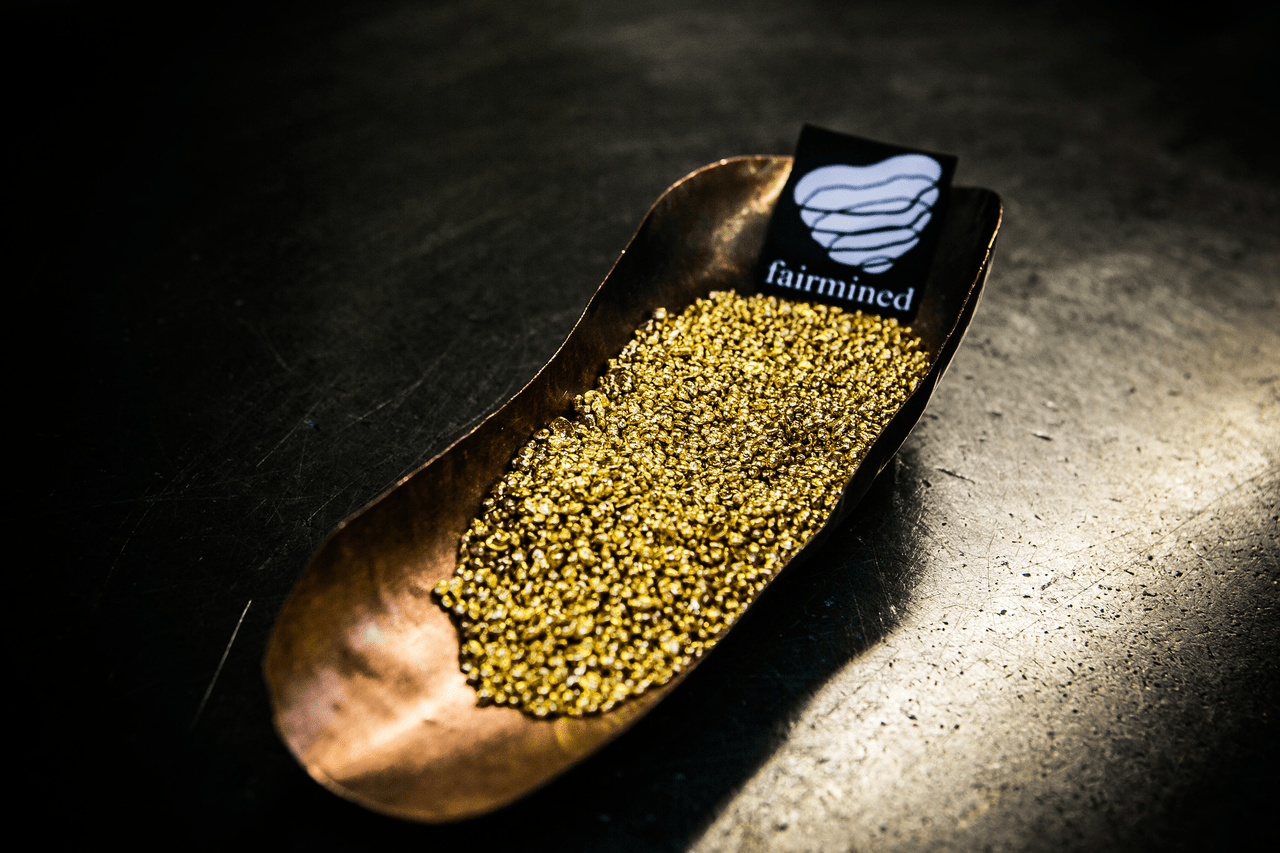 Fairmined gold
Fairmined gold
Apart from this, Chopard has the ‘Journey To Sustainable Luxury Programme’, which works towards helping the people in its supply chain via various philanthropic organisations and provides the best working conditions for all staff members. “It is not an easy journey, but it is the right one,” says Caroline Scheufele, Artistic Director and Co-President of Chopard. Over the last few years, Chopard has also created the Green Carpet Collection of high jewellery using only sustainably sourced and traceable precious materials; the Palme Verte Collection, the first diffusion lines in Fairmined gold; and in 2017 launched the Ice Cube line, a jewellery line crafted in Chopard ethical gold that was 100 per cent responsibly sourced.
Another luxury watch brand that is taking its efforts towards sustainability seriously is Breitling, launching its first-ever ‘traceable watch’ in October 2022. The Super Chronomat Automatic 38 features small-scale gold and lab-grown diamonds that can be traced to their origins. The house also assesses the social and environmental impact all along its supply chain by contributing directly towards infrastructure investment, fair wages, healthy working conditions, protection of biodiversity, and after the close of mining activities, land remediation for all gold purchased. Also, the entire chain of custody has been independently verified and recorded in a blockchain-backed NFT that comes with every Super Chronomat Origins.“Breitling is on a mission to create beautiful products and experiences with better materials and better manufacturing,” says Georges Kern, CEO, Breitling. “Our roadmap begins here with the proof-of-concept Super Chronomat Origins.” By 2025, Breitling aims for its entire product portfolio to feature better gold and better diamonds, i.e., artisanal gold and lab-grown diamonds, responsibly sourced from accredited suppliers.
 Breitling Super Chronomat Automatic 38 Origins
Breitling Super Chronomat Automatic 38 Origins
To be fully accountable, Breitling is also introducing end-to-end traceability by sourcing gold from a single artisanal mine that meets the Swiss Better Gold Association’s criteria. The association improves working, living, and environmental conditions in artisanal and small-scale gold mining communities and facilitates the creation of responsible supply chains for the Swiss market. The brand has also been releasing sustainability reports since 2021, which give insight into the efforts made towards their goals in every aspect—product, actions towards climate change, employee programmes, community engagements, and progress.
Step 2: Building a better base
A small step for the world of watches, a large step for mankind—the undeniable phenomenon of making alloys and using alternative materials has taken over. Several brands are veering away from using 100 per cent of a single material. Repercussions include higher durability, and limiting one’s usage of precious and environmentally endangering substances.
Let’s start with the newest material on the block—lab-grown diamonds (also on the Breitling Super Chronomat Automatic 38 Origins)—and the watch that embodied them most this year and last year, the TAG Heuer Carrera Plasma. Each lab-grown diamond piece was ‘grown’ to fit the watch in a way that regular diamonds could never, including a whole single diamond crown of 2.5K. “Innovation and redefining frontiers is in our DNA. With the introduction of the TAG Heuer Carrera Plasma, we want to expand the possible palette and designs for diamond watches and diamonds in general, and create a new and breathtaking vision of mastering carbon and diamond design as well as cutting-edge light effects,” explains the then CEO of TAG Heuer, Frédéric Arnault.
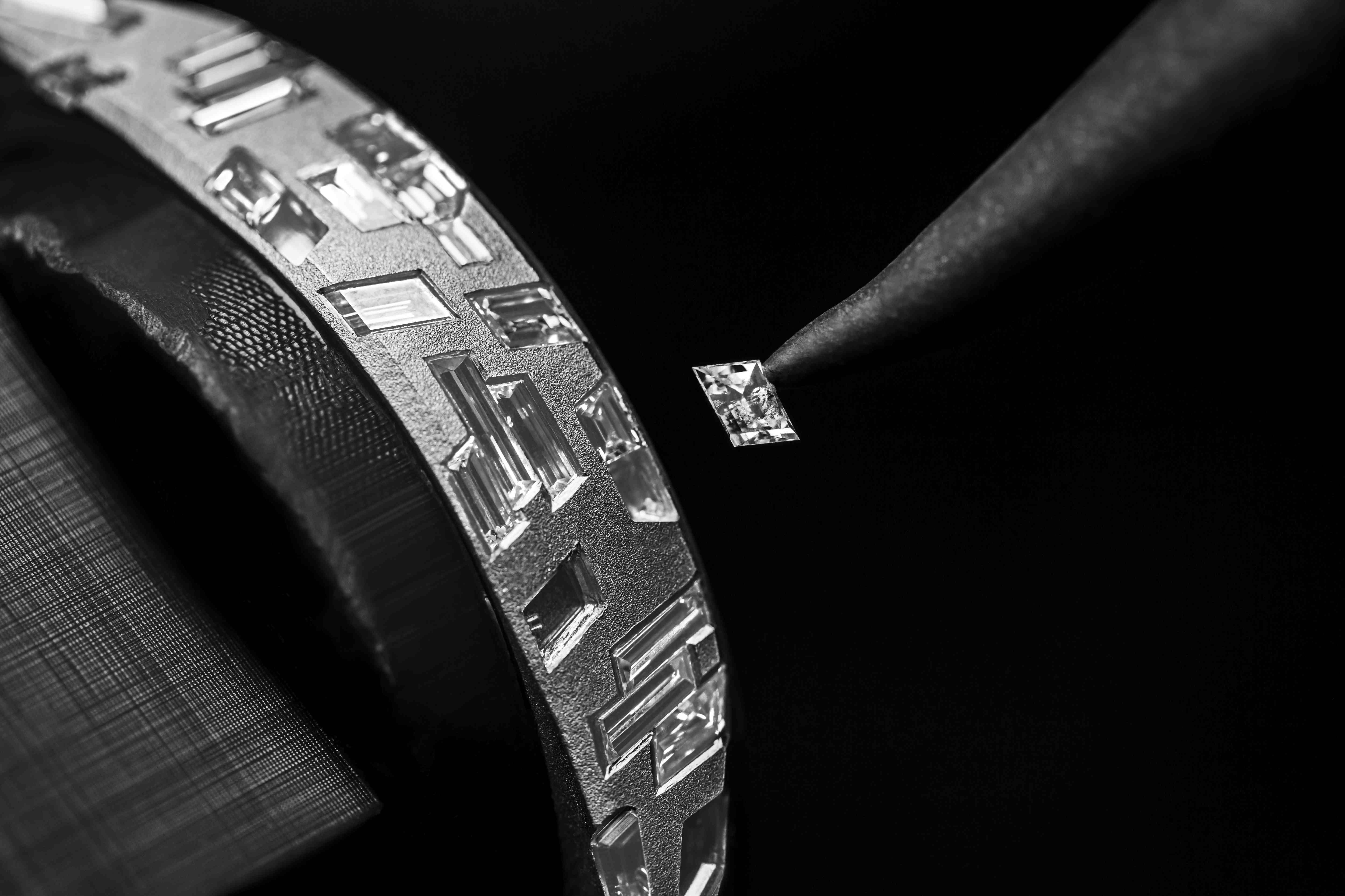 Lab-grown diamonds of the TAG Heuer Carrera Plasma
Lab-grown diamonds of the TAG Heuer Carrera Plasma
Panerai, on the other hand, has taken a highly innovative approach with ‘eSteel’, a next-generation metal obtained from 100 per cent recycled steel scrap from different industries, in particular watchmaking. Its production significantly reduces CO2 emissions and promises identical chemical behaviour, physical structure, and corrosion resistance as a non-recycled alloy. It is present in the Submersible and Luminor lines, and the house is also going beyond the case itself and adding recycled PET fabric and recycled rubber straps to its offerings. These are composed of recycled plastic bottles that were collected before reaching the Mediterranean Sea, complete with stitching done with recycled PET, and a lining that is made with recycled microfibre. Last year also saw the release of the Luminor Quaranta Razer crafted in DLC-coated eSteel—the watch comes in packaging composed of 72 per cent recycled material and weighing 53 per cent less than the previous version. In 2021, Panerai also introduced eLAB-ID, a concept watch with the highest percentage of recycled material ever (98.6 per cent by weight). “As a company, we have the responsibility to be active and support the urgent need for change and help protect our planet, empowering everyone to take direct action to take care of it. The more we can work together, the better,” says Panerai CEO Jean-Marc Pontroué.
 Panerai Luminor QuarantaLazer in eSteel
Panerai Luminor QuarantaLazer in eSteel
Recycling and using recycled plastic has taken off in a big way in watchmaking. In 2022, Ulysse Nardin unveiled a partnership with the open-sea sailing championship The Ocean Race, and this year, as a fitting association for their Diver series, unveiled the Diver: The Ocean Race. The watch is crafted from Nylo® (60 per cent), which is 100 per cent recycled fishing net, and Carbonium (40 per cent), with a caseback made from waste materials from the automotive industry. The straps are also made from 100 per cent R-PET, recycled from the sea. The watch also employs 80-85 per cent recycled waste materials from the car industry for the case, while the bezel uses waste materials from aircraft parts.
Then there is Zenith, which gets recycled straps from LVMH’s Nona Source. The straps are made from deadstock fabric from the conglomerate’s many companies—these are currently available for the DEFY Midnight collection. In addition, Zenith also partnered with the annual electric rally Extreme E, a race that aims to raise awareness about the fragility of our planet’s ecosystems. The result was the Defy Extreme E series of 45mm watches, each inspired by the terrain of the location of the race. The watches’ rubber straps are infused with materials from upcycled Continental CrossContact tires that were used in the first season’s races, and the pieces are presented in waterproof and crushproof cases, whose lid coating is made from E-grip recycled tires, and the plate covering from parts of an Extreme E racing tarpaulin.
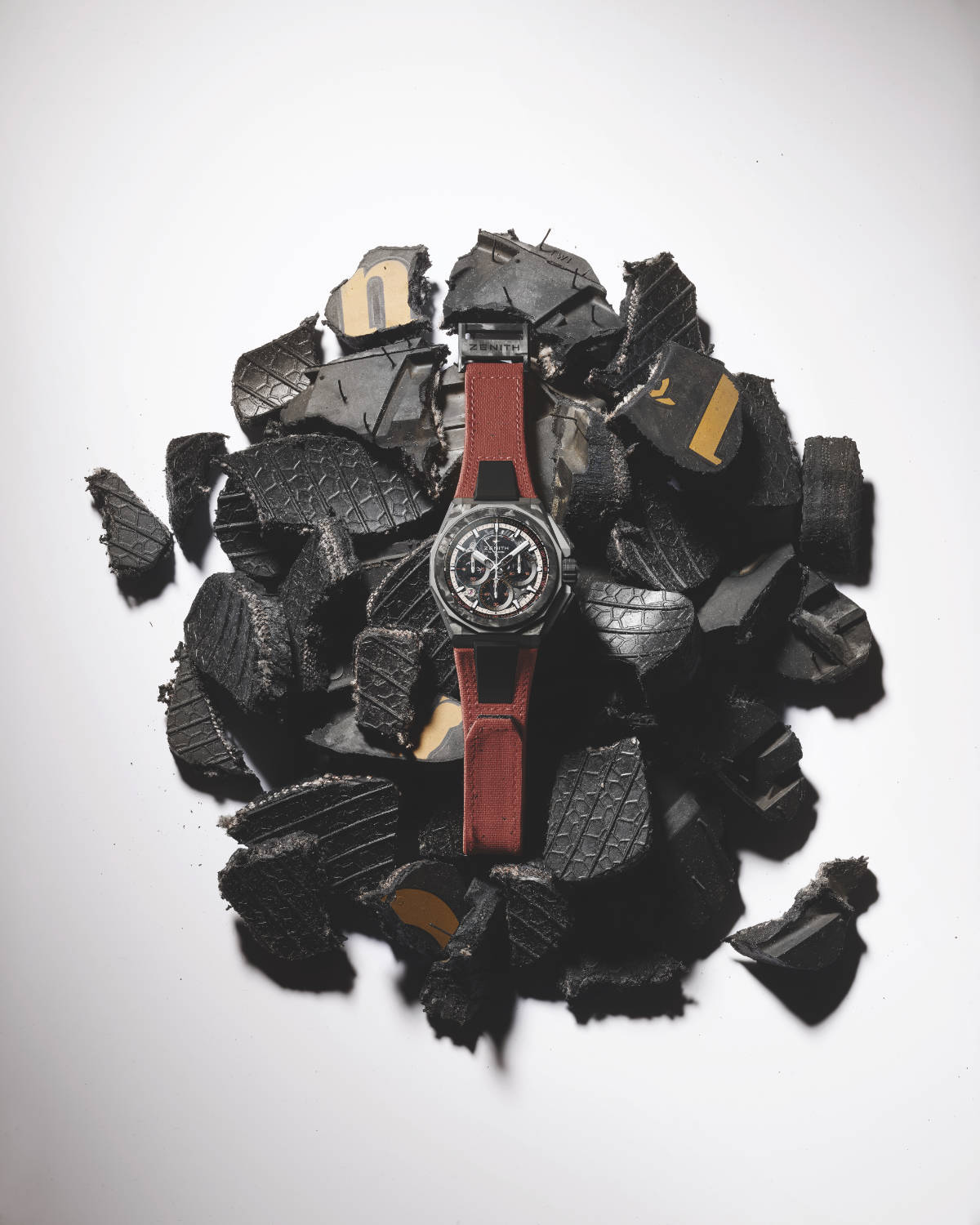 The DEFY Extreme E “Copper X Prix” will be made in a limited edition of only 20 pieces
The DEFY Extreme E “Copper X Prix” will be made in a limited edition of only 20 piecesThere is a lot being done by brands in the area of watch straps. Austrian brand Hirsch, which has specialised in straps and bracelets since 1945, has also launched Hirsch Nature Technology, which means it will only feature materials of natural origin that are manufactured in-house. From natural leaves to rose petals, the special manufacturing process is done in-house, reducing the supply chain and ensuring a better carbon footprint. Also, these are only made for production orders, allowing the materials to only be produced and procured as required.
IWC has also taken a step towards this movement and offers TimberTex straps for some of its existing watches, including those in the Portugeiser and Portofino series. Composed of 80 per cent natural plant fibres, the cellulose used in these comes from Forest Stewardship Council (FSC)—certified trees grown in the non-profit organisation’s sustainably and responsibly managed European forests. It is then manufactured in Italy, using traditional papermaking techniques, and coloured with plant-based dyes. The material’s irregular grain makes every strap unique. In addition, the brand also uses 100 per cent renewable energy for its headquarters and is working towards maintaining traceability for the gold and platinum it uses.
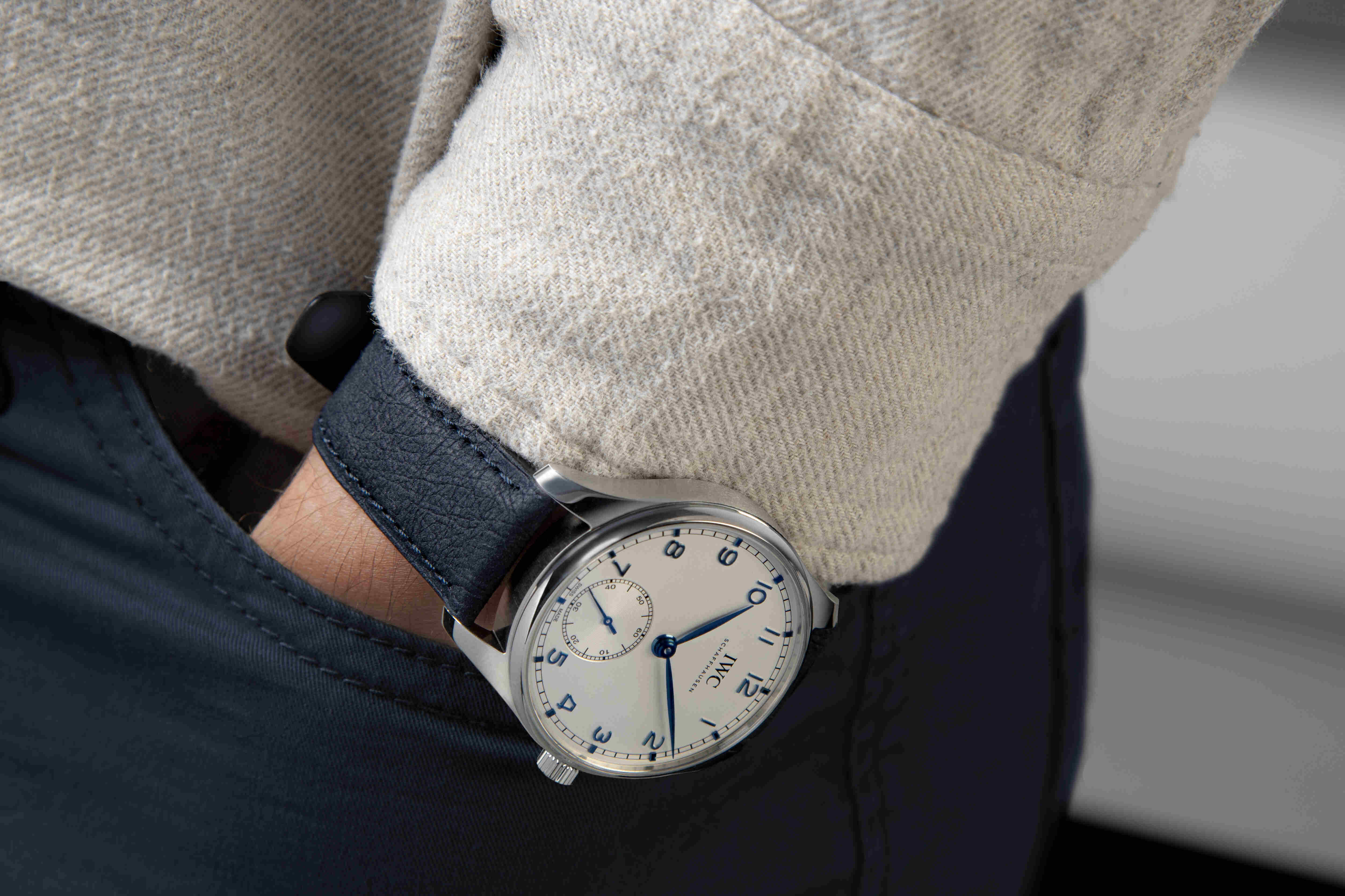 IWC’s Portugieser Automatic 40 on TimberTex straps
IWC’s Portugieser Automatic 40 on TimberTex strapsAnother brand that deserves mention when it comes to making magic from waste is Oris. In 2019, the brand took its iconic Aquis and gave it a unique twist by making a limited edition of 2,000 pieces of the Aquis Clean Ocean, whose caseback was made with recycled plastic. The brand later made the Aquis Date Upcycle, where plastic collected from the oceans was used to create the dial using the same technique. It also launched the New York Harbor Limited Edition last year to aid the healthy development of the biodiverse underwater ecosystem of the Hudson River in New York and commemorate its association with the Billion Oyster Project. The Nature Conservancy, which also sponsors the Billion Oyster Project, estimates that “a staggering 85 per cent of oyster reefs have been lost in the last 200 years” due to “pollution, disease, overharvesting, drought, and habitat loss”. The project reclaims used oyster shells from over 50 restaurants in the city—Oris volunteers remove any trash or debris that may have accumulated among the shells and then place them in nursery tanks filled with New York harbour water. Oyster larvae are then released into these tanks, where they gradually find a spot to permanently attach themselves and grow their own shells. The oysters are then placed in the harbour at one of the Billion Oyster Project’s 18 restoration sites and generations of adult oysters grow on top of one another; oyster reefs are eventually formed. Also, according to the Oris 2021 Sustainability Report, the brand is officially carbon neutral, based on an emissions audit conducted by ClimatePartner, a corporate climate action solutionist.
Step 3: Conservation is key
While crafting a watch consciously is one thing, extending direct support to environmental causes is another side of the same coin. Given that water levels and marine litter are at an all-time high, and coasts are in danger of being washed away and marine life endangered, several luxury watch brands have turned to ocean conservation.
In 2013, Omega and the GoodPlanet Foundation began collaborating on two projects in Indonesia’s North and South Sulawesi regions that concentrated on strengthening the resilience of marine biodiversity and building community empowerment in climate change mitigation. Made possible in part by proceeds generated from the sale of Omega’s Seamaster Planet Ocean 600M GoodPlanet GMT wristwatches, the partners are restoring and preserving delicate ecosystems, educating the local population, helping raise awareness of environmental issues, and encouraging sustainable development.
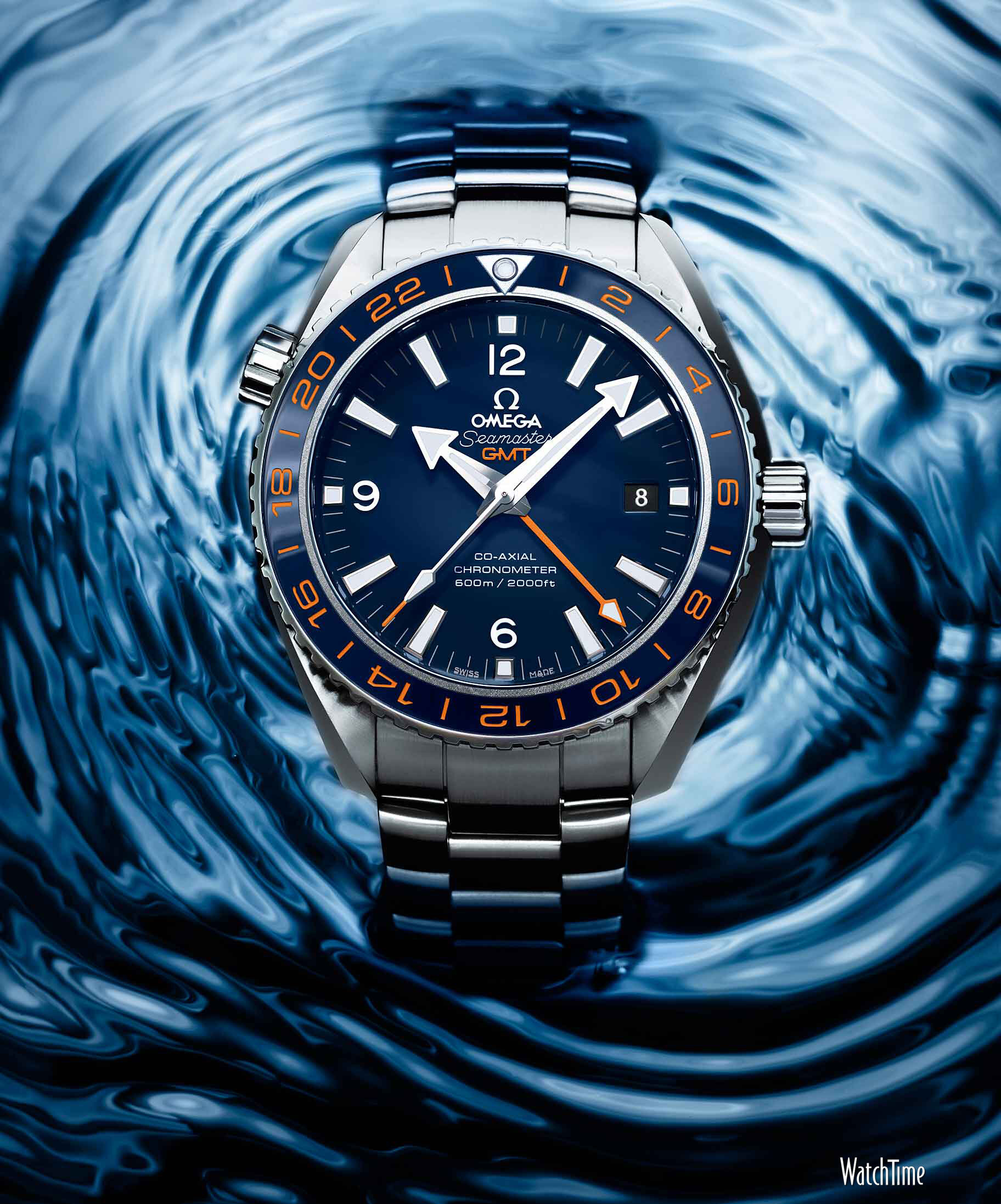 Omega Seamaster Planet Ocean 600M GoodPlanet GMT
Omega Seamaster Planet Ocean 600M GoodPlanet GMT
Rolex, on the other hand, has been working towards conserving what are known as ‘Hope Spots’ in the ocean with marine explorer and Rolex testimonee since 1982 Sylvia Earle through Mission Blue. For ten years now, the aim of this partnership has been to create a global network of Marine Protected Areas (MPAs) called Hope Spots through the preservation of ecologically important areas of the oceans considered vital to the preservation of species or places where communities rely on a healthy marine environment to survive. Since its inception, more than 130 Hope Spots have been recognised around the world, with 21 created in 2019 alone.
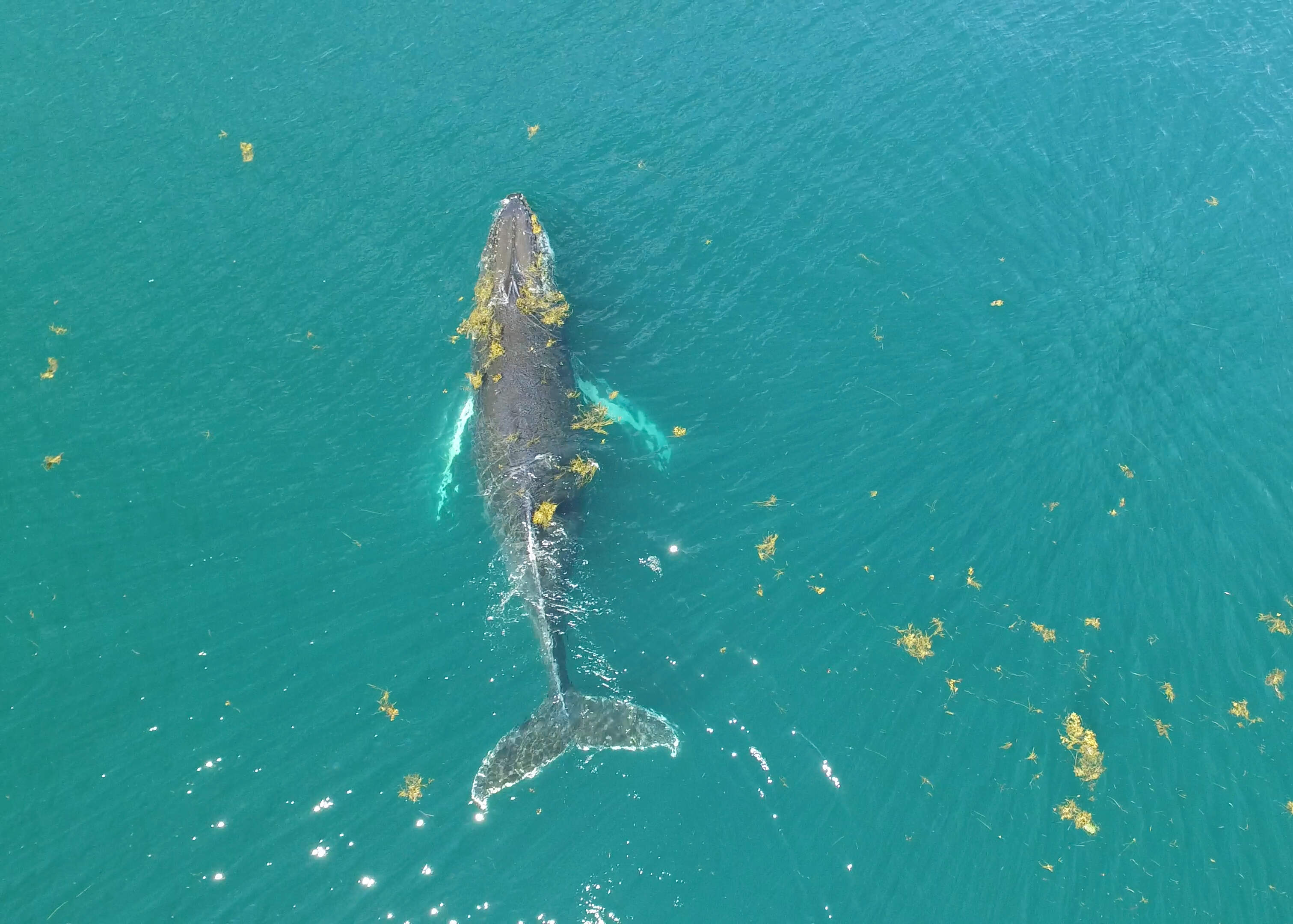 Mission Blue is a key partner of the Perpetual Planet Initiative. It advocates for community-led protection of marine areas with great biodiversity through the creation of Hope Spots. Image: Rolex/Andrew Stevens
Mission Blue is a key partner of the Perpetual Planet Initiative. It advocates for community-led protection of marine areas with great biodiversity through the creation of Hope Spots. Image: Rolex/Andrew Stevens
Blancpain has also had an active role in conserving many Marine Protected Areas over the years and has run the ‘Blancpain Ocean Commitment’ project since the launch of its diver watch Fifty Fathoms in 1953. This has been done through various expeditions, award series, films and even a limited-edition series of watches that promised an additional donation of €1,000 for every watch towards the cause. “In continuation of the Fifty Fathoms’ role in the opening up of the underwater world, Blancpain has been supporting those who best raise awareness of ocean issues, and especially those who convey a positive message insisting on the inspiring beauty of what’s intact,” explains Marc A. Hayek, Blancpain President & CEO.
While each step is a drop in the ocean of change, the step that matters most is how each individual can create a better world. Today, people are far more conscious of the choices they make. So be it cutting down on single-use plastic, going vegan, or opting for an electric car—each choice seeps into and creates that larger picture. That could now well include the watch you wear.
Images: Courtesy brands
This story first appeared in the January - March 2023 issue of WatchTime India. It has been updated to reflect recent developments. To subscribe to the magazine, click here. 















